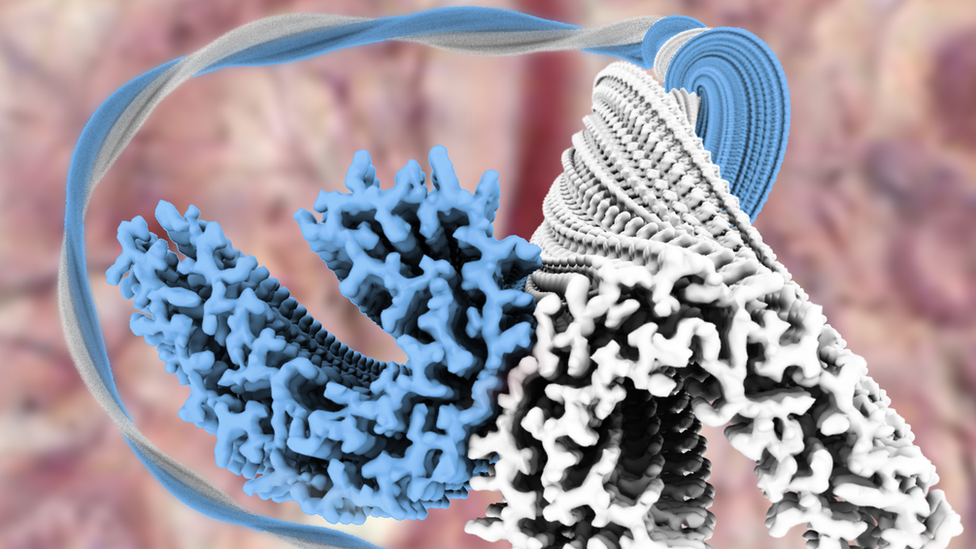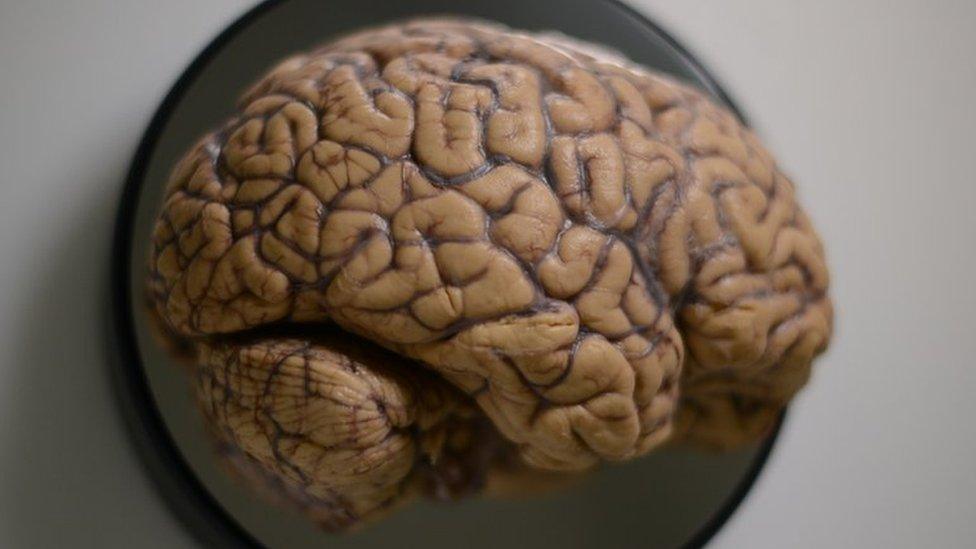Sharp focus on Alzheimer's may help target drugs
- Published

Abnormal deposits that build up in the brain during Alzheimer's have been pictured in unprecedented detail by UK scientists.
The team at the MRC Laboratory of Molecular Biology says its findings "open up a whole new era" in neurodegenerative disease.
Their work should make it easier to design drugs to stop brain cells dying.
The researchers used brain tissue from a 74-year-old woman who died after having Alzheimer's disease.
The form of dementia leads to tangles of a protein called tau spreading throughout the brain. The more tau tangles there are, the worse the symptoms tend to be.
Doctors have known this has happened for decades but what has been missing is a detailed understanding of what the tangles look like.
The team took advantage of the "resolution revolution" in microscopy to take thousands of highly detailed images of the tau inside the woman's brain tissues.
And using computer software, they figured out the tangles look like this:

It is pretty meaningless to an untrained eye, but to scientists this could be one of the most important recent discoveries in tackling dementia.
Attempts to develop a drug to slow the pace of dementia have been met by repeated failure. But it is hard to come up with a drug when you do not know the precise chemical structure of what you are targeting.
Dr Sjors Scheres, one of the researchers, told the BBC News website: "It's like shooting in the dark - you can still hit something but you are much more likely to hit if you know what the structure is.
"We are excited - it opens up a whole new era in this field, it really does."
Rules of memory 'beautifully' rewritten
Experts excited by brain 'wonder-drug'
Similar dysfunctional proteins are found in many brain diseases. Alzheimer's also has beta amyloid while Parkinson's has alpha synuclein.
The structure of tau, published in the journal Nature, external, is the first to be determined in such detail.
Fellow researcher Dr Michel Goedert told the BBC: "This is a big step forward as far as tau goes but it is bigger than that.
"This is the first time anybody has determined the high-resolution structure [from human brain samples] for any of these diseases.
"The next step is to use this information to study the mechanisms of neurodegeneration."
Dr Tara Spires-Jones, from the centre for cognitive and neural systems at the University of Edinburgh, said the findings "substantially advance what we know".
She added: "These results will be useful for developing molecules to detect tau tangles in patients and potentially for developing treatments."
Follow James on Twitter, external.
- Published27 July 2016

- Published7 April 2017

- Published20 April 2017
